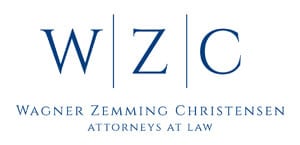Real Estate Newsletter

Real Estate Newsletter
Conveyancing
Conveyancing, as the name implies, is the art of transferring property to a new owner. The attorney involved in conveyancing is the person who takes the desires of the buyer and seller and translates them into legal reality by drafting and recording appropriate deeds or similar instruments. To do so, the attorney will determine such issues as what form of document is appropriate for the transaction, who must sign, how the new owners will hold title, exactly what interests in the property will be conveyed, and the like.
The deed is the document that transfers ownership of real estate. It will identify the buyer (grantee) and seller (grantor), provide a legal description of the property, and be signed by the person transferring the property. The seller's signature must be notarized. There are two types of deeds commonly used in real estate transactions.
The most common form of deed is a warranty deed (sometimes called a grant deed). This deed transfers ownership and also explicitly promises (warrants) that the grantor/seller has good title to the property. The other common form of deed is the quitclaim deed. A quitclaim transfers any ownership interest the grantor/seller has in the property but makes no promises or guarantees about what that interest is or that title is good. Put another way, a warranty deed says I promise that I own the property I am giving you and the title to it is good, while a quitclaim deed says I'm giving you whatever interest I have in this property, but I'm not making any promises about it-my title might not be good and I might not even own the property-but whatever I have is now yours. Quitclaim deeds are most commonly used to clear up title problems, to transfer property between spouses after a divorce, or in informal transactions between friends or family members.
Where two or more people are purchasing property together, the real estate lawyer must also determine how they will take title, commonly asking whether they wish to hold the property as joint tenants or as tenants in common. This decision makes no difference in most of the rights and duties of the co-owners but makes a great difference in how the land is treated upon the death of a co-owner. The word tenant in joint tenant or tenant in common is an old English law term that in this context merely means owner.
A joint tenancy involves the right of survivorship. This means that when one joint tenant dies, that owner's share passes automatically to the surviving joint tenants. This happens whether or not the deceased owner had a will; in fact, it happens even if the deceased owner's will attempts to leave his interest in the land to someone else. The joint tenancy is a popular form of co-ownership between husband and wife, because there is no need for a will or probate of the joint tenancy land, which can save significant time and expense. A minority of states also recognizes a tenancy by the entirety, which is a form of joint tenancy (with the right of survivorship) that can only be created between husband and wife.
By contrast, tenancy in common is a form of shared ownership where two or more persons own land without the right of survivorship. Thus, when a tenant in common dies, the interest of the deceased owner passes to his or her heirs or the persons named in his or her will.
The final, and extremely important, step in the conveyancing process is recording the deed, mortgage, or other instrument in the county where the property is located. The name of the county office involved with recording real estate instruments varies from state to state; it is commonly called the county recorder's office, land registry office, registrar of titles or register of deeds. Recording is extremely important, as the owner's interests are not fully protected unless and until the document is recorded. And, the sequence in which deeds and other documents are recorded also determines the priority of various claims against the property.
- Example: An example will illustrate the extreme importance of recording real estate instruments promptly. Sally has some land worth $10,000. On Monday, she borrows $10,000 from Brad and gives him a mortgage on her land to secure the debt. Brad, however, does not get around to recording his mortgage until Friday. On Tuesday, Sally (who is not a very honest person) borrows another $10,000 from Amy and gives her a mortgage (without telling Amy she has already mortgaged the property to Brad). Amy records her mortgage immediately. When Sally does not pay back the money she borrowed, both Brad and Amy attempt to foreclose their mortgages. The land is only worth enough to pay back one of them in full. Who gets paid? Amy will receive all the value in the land until she is paid in full and Brad getting only what value (if any) is left. The reason for this is that while Brad was the first person to receive a mortgage from Sally, Amy was the first to record a mortgage against the land. Assuming Amy did not know about Brad's prior unrecorded mortgage (since this rule applies only to persons who act in good faith), since Amy recorded first, her mortgage is said to have priority over Brad's, even though Brad's mortgage was actually executed first.
Your First Appointment With a Real Estate Attorney
To read and print out a copy of the checklist, please follow the link below.
Your First Appointment With a Real Estate Attorney
You can download a free copy of Adobe Acrobat Reader here.
Copyright © 2008 FindLaw, a Thomson Reuters business
DISCLAIMER: This site and any information contained herein are intended for informational purposes only and should not be construed as legal advice. Seek competent counsel for advice on any legal matter.


